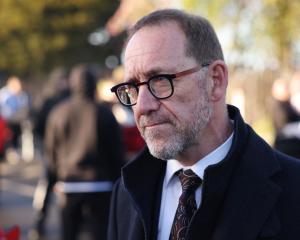
Wide-scale user-charges are being considered for popular attractions to help Doc deal with increasing pressures to maintain and improve its assets.
Speaking at the University of Otago’s Tourism Policy School in Queenstown, Doc Director-General Penny Nelson said that conservation-related tourism in New Zealand is worth about $3.4 billion a year.
“Visitor satisfaction is high, but we still have a lot to do to protect the experiences we’re promising and make sure the environment is looked after.
She said the government had set a priority for the department to increase revenue and invest in areas with high conservation value.
‘‘Doc has consulted the public on a proposal to introduce charges for the public to access some high-volume areas, as is the case in many countries overseas.
‘‘Overall, feedback was supportive, especially for charging international visitors more.’’
At the moment, Doc only charges people who stay in huts, or businesses who operate on conservation land.
Visitors who do short walks – the most popular activity – do not pay anything.
Ms Nelson said from next summer it will pilot carparking charges at Aoraki/Mt Cook, Punakaiki and Franz Josef Glacier to help manage visitor numbers and cover upkeep costs, which many other countries do.
“We have done a lot of work at high volume sites, like Tongariro, Aoraki/Mt Cook and Mautohe Cathedral Cove, working with iwi, tourism businesses and communities to manage these destinations carefully.
‘‘We are getting results and are looking at how to scale that up in other places.’’
Doc is the largest provider of visitor experiences in New Zealand with more than 16,000 hut beds and hosts 64,000 walkers on the Great Walks each year.
“Our visitor network is large – yet we can only afford about 70 % of it,’’ Ms Nelson said.
“It costs us 30% more now to build swing bridges in the back country than it did four years ago.”
Climate change – more fires, floods and severe storms - was making the problem worse, she said.
“Our spending on storm repairs has quadrupled in the past five years and 300 of our coastal assets are in the danger zone from rising sea levels.”
Since the beginning of the year there have been 11 fatalities on conservation land, five of which were from falls beyond tracks.
“We’ve also seen some appalling and dangerous visitor behaviour this summer with people driving over birds nesting on beaches and harassing sea lions to get a better photo or video.
“We love hosting visitors on conservation land and connecting them to nature. Most visitors come here for our mountains, open landscapes, quirky wildlife and unique cultural heritage, and if we don’t protect them, they will stop coming.”
— APL













